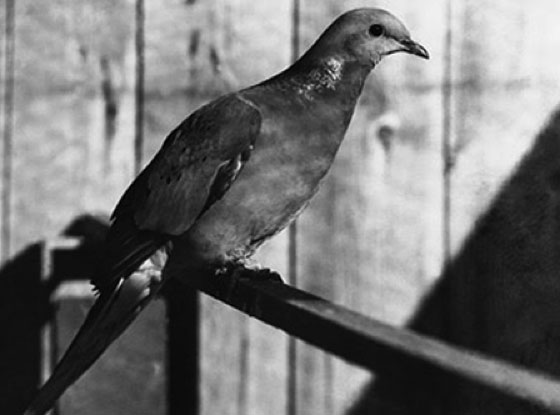Learn It Part 2
Now that we have explored a process for tracing the development of an overall central idea in text, let’s practice with an article representative of scientific text. Read the title, examine the photograph with caption, and read the first paragraph of the article entitled “From Many, to Few, to None” from U.S. Fish and Wildlife Service.
Remember to ask yourself:
- What is most important in this text?
- What is the biggest idea?
- What does the author want me to learn?
- Why does this information matter?
Title: From Many, to Few, to None

Photograph with Caption: Martha, the last passenger pigeon, lived her entire 29-year life in the Cincinnati Zoo.
Paragraph 1:
Once the most abundant bird in North America, the passenger pigeon was hunted to extinction in the early 1900s. The last of its kind, named Martha, died in captivity on September 1, 1914. A century later, her story serves as a somber remembrance of what our nation has lost.
— U.S. Fish & Wildlife Service, August 18, 2014
After reading the title, examining the photograph and caption, and reading the first paragraph, which statement best represents the central idea of the article?
- Martha, a 29-year-old passenger pigeon, died in captivity at the Cincinnati Zoo.
- Over a century ago, there were a large amount of passenger pigeons in North America.
- Martha’s story serves to remind our nation of a once abundant species that is now extinct.
- In the early 1900s, the passenger pigeons were hunted to extinction.
Think about your response and then click Show Answer.
Some readers might think that this article would be about a bird named Martha or about passenger pigeons based on a quick read of the title, photo, caption and first paragraph. However, a more careful read reveals that the author has given clues that this article will be about a bigger concept.
Complete the drag-and-drop activity below, or complete the alternative fill-in-the-blank activity. (This alternative activity is provided for students using keyboard only or screen readers.) In the activity below, sort the following statements into “Big Ideas/Clues to the Central Idea” and “Supporting Facts/Details.”
Now go to the following page to continue exploring the article and identifying the central idea.


